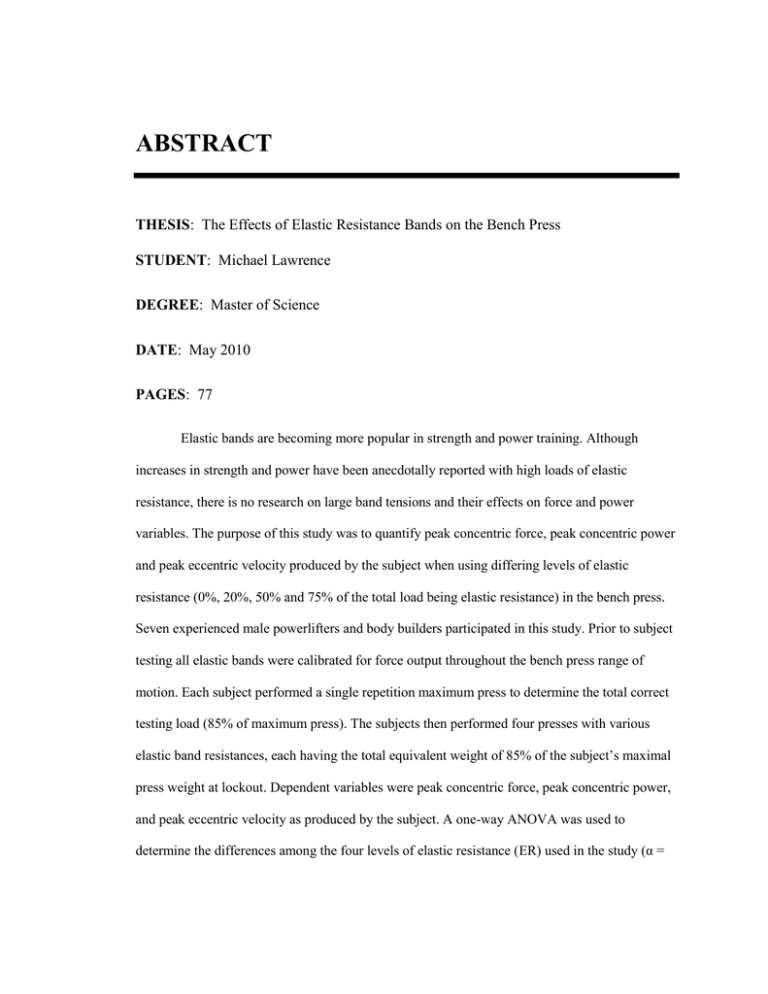ABSTRACT THESIS STUDENT
advertisement

ABSTRACT THESIS: The Effects of Elastic Resistance Bands on the Bench Press STUDENT: Michael Lawrence DEGREE: Master of Science DATE: May 2010 PAGES: 77 Elastic bands are becoming more popular in strength and power training. Although increases in strength and power have been anecdotally reported with high loads of elastic resistance, there is no research on large band tensions and their effects on force and power variables. The purpose of this study was to quantify peak concentric force, peak concentric power and peak eccentric velocity produced by the subject when using differing levels of elastic resistance (0%, 20%, 50% and 75% of the total load being elastic resistance) in the bench press. Seven experienced male powerlifters and body builders participated in this study. Prior to subject testing all elastic bands were calibrated for force output throughout the bench press range of motion. Each subject performed a single repetition maximum press to determine the total correct testing load (85% of maximum press). The subjects then performed four presses with various elastic band resistances, each having the total equivalent weight of 85% of the subject’s maximal press weight at lockout. Dependent variables were peak concentric force, peak concentric power, and peak eccentric velocity as produced by the subject. A one-way ANOVA was used to determine the differences among the four levels of elastic resistance (ER) used in the study (α = 0.05). Compared to the baseline condition (2123.6 ± 499.9N), significantly lower average peak concentric force was observed with ER of 75% (1451.2 ± 151.0N, 31.9% decrease) (p = .010) and with an ER of 50% (1781.1 ± 174.3N, 16.4% decrease) (p = .052). When compared with baseline peak concentric power (702.6 ± 274.6W), higher peak power was observed in all band trials: 20% (895.2 ± 187.7W, 27.4% increase), 50% (972.5 ± 189.8W, 38.4% increase) and 75% (979.6 ± 171.0W, 39.4% increase) (p = .009; p = .007; p = .033, respectively). There was no significant difference in peak concentric power in any ER trials. No significant differences (p = .080) were seen in peak eccentric velocity. Therefore ER loads of 20, 50 and 75% provide greater stimuli for producing peak concentric power than no ER, with only a 20% load of ER maintaining the same peak concentric force production as baseline. ER loads of 50 and 75% may not be as effective a stimuli as free weights when the training objective is to increase force production



